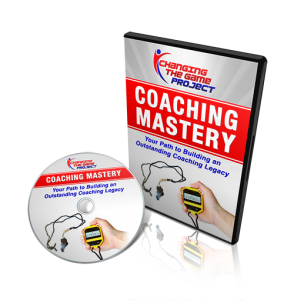This article is republished with permission. The original article appears at Peak Performance Sport
By
One point at a time… one set at a time… one match at a time.
How many times in your athletic career have you heard a coach, player, teammate, commentator or parent mention the previous mantra?
As a volleyball player, you know you should be focused on one point at a time.
You know that the only way to play at your peak is when you are fully immersed in the current point.
If every volleyball player understands the importance of focusing “one point at a time”, then why do so many players have difficulty with this type of focus?
There are a few reasons why some volleyball players have difficulty maintaining a “one point at a time” focus:
1. You are constantly being bombarded by distractions that can hurt your focus.
Your mind can wander during a match hundreds of times while you are attempting to play. Some distractions are external, but most are internal distractions…
Your internal voice is constantly reminding you of past mistakes, bad matches, the importance of this match, how tired you feel, how sore your hip is, who you may be playing in the next round, what your coach might say to you after the match, etc.
2. You may not be consciously aware of what you are focusing on.
If you are not consciously aware of what you are focusing on and how that focus affects your game, it becomes almost impossible to stay focused on the right things that will help you play optimally in the moment.
3. You may never have devoted any time or training towards improving your focus.
Focusing is a mental skill and skills require practice. Even the most technically-sound athletes continue to practice their technique.
That repetition is what makes those athletes great. If you want to have improved focused, then you need to train your focus.
If you want to consistently play your best, then you need to have a sound mental game, in particular, a “one point at a time” focus.
University of Nebraska senior, Kenzie Maloney, talks the talk and walks the walk when it comes to focus.
Nebraska beat Maryland in dominating fashion 25-13, 25-10, 25-18 with Maloney leading the way with three aces and 11 digs.
Even though Nebraska ended its regular season on an eight-match winning streak, Maloney still preaches that there is only one path to success in the post season and that is by focusing one point at a time.
MALONEY: “You can’t really look ahead to the final four even thought that’s our goal. I think it’s just focusing on first round, second round, and then taking it point by point and really focusing on the opponent at hand instead of looking so far ahead.”
Focusing on the present moment is where peak performance can be achieved… so roll up your sleeves and get to work on your FOCUS game!
How to Have a “One Point At A Time” Focus
- Identify what you should focus on during a single point given your role on the team. What performance cues help you on the court?
- Be aware of the thoughts and game situations that pull you away from fully focusing on the current point.
- Fully immerse yourself into the current point–one play or touch at a time. Does anything else matter when playing?
- When you notice you’re distracted, refocus on the current point in the match.
Awareness is a key step in developing laser “one point at a time” focus.

